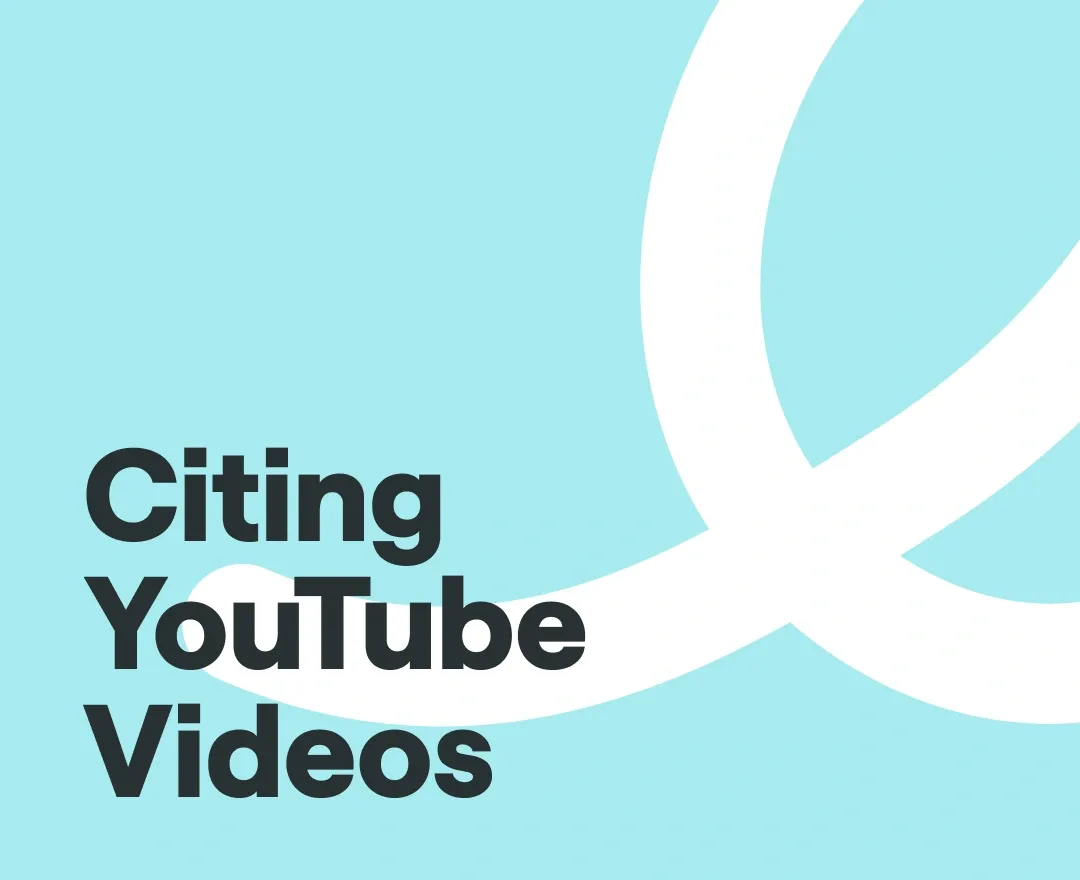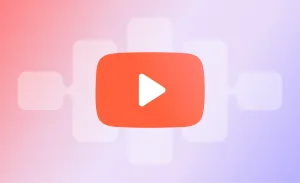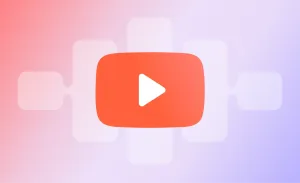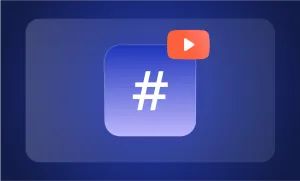Stumbled upon the perfect YouTube video for your research but are stuck on how to cite it?
The rules can be tricky, and one wrong move could throw off your entire research's credibility.
Luckily, we’ve broken down exactly how to handle YouTube citations in the three most common styles—APA, MLA, and Chicago—so you can cite like a pro and save yourself from any last-minute formatting panic.
How to cite a YouTube video: APA, MLA, Chicago
How to cite a YouTube video in APA
In APA format, you list the person or organization who uploaded the video, the upload date, the video title in italics, and the platform (YouTube) followed by a URL. The APA format is commonly used in the social sciences, such as psychology, education, and sociology.
APA format template:
Last Name, Initials. [Channel Name]. (Year, Month Day). Video title [Video]. YouTube. URL
In cases where you don’t have the last name or the publisher's initials, simply start with the channel name.
Here’s an APA citation example we did for one of our Podcastle videos to guide you:
APA citation example:
Podcastle. (2024, April 27). Easiest Way to Podcast: Full Tutorial [Video]. YouTube. https://www.youtube.com/watch?v=FeHew56g3eg
When using this APA YouTube video citation, just remember to adjust it according to the specifics of the video you’re citing. Now let’s move to the next famous citation format: MLA
In-text citation: (Podcastle, 2024)
How to MLA cite a YouTube video
When you’re writing academically, it’s crucial to give credit where it’s due. That’s where MLA (Modern Language Association) format comes into play. Commonly used in the humanities, especially in literature, philosophy, and the arts, MLA helps maintain clarity and consistency in citations.
To cite a YouTube video in MLA format, you'll need to include the creator's name (if known), the title of the video (in quotation marks), the platform (YouTube) in italics, the upload date, and the URL. If the uploader is the same as the creator, you’ll start with the video title.
MLA format template:
Video’s creator. “Video title” YouTube, Day Month Year, URL.
In cases where it’s not clear who the author or creator of the video is, you can simply omit the “video’s creator” element and start with the video's title. Here’s the MLA YouTube video citation template for those cases:
“Video title” YouTube, Day Month Year, URL.
MLA citation example
Here’s a MLA citation example for the same Podcastle video we used before:
Podcastle. “Easiest Way to Podcast: Full Tutorial.” YouTube, 27 Apr. 2024, www.youtube.com/watch?v=FeHew56g3eg.
In-text citation: (Podcastle). If we didn’t know that Podcastle was the creator, we would go with the video title name, in our case: (“Easiest Way to Podcast: Full Tutorial”).
How to Chicago style cite a YouTube video
Citing a YouTube video in Chicago style citation is pretty straightforward, making it easy to give credit where it’s due.
You'll want to include the creator's name, the title of the video, the platform, the upload date, and the URL.
The Chicago style format recommends mentioning the video in your notes but may not always require it in your bibliography unless it's crucial to your argument.
Chicago style citation template
Here’s a handy Chicago style citation example to help you out:
1) Bibliography entry:
Author Last Name, First Name. “Video Title.” Platform Name. Month Day, Year. Format, Video Length. URL.
2) Full note:
Author first name Last name, “Video Title,” Additional information, Month Day, Year, Format, Video length or Timestamp(s), URL.
3) Short note:
Author last name, “Shortened Video Title,” Timestamp(s).
Chicago style citation example
Taking the same Podcastle video as a reference, here’s how we’d cite it using the Chicago style:
1) Bibliography entry/Full entry:
Podcastle. “Easiest Way to Podcast: Full Tutorial.” YouTube. April 27, 2024. Educational video, 12:28. www.youtube.com/watch?v=FeHew56g3eg.
2) Short note:
Podcastle, “Easiest Way to Podcast,” (2:30-4:01)
3) In-text citation: (Podcastle 2024, 2:35)
How to locate relevant information from YouTube videos for accurate citation
When it comes to creating an accurate YouTube video citation, one of the trickiest parts is figuring out where exactly in the video the information you need is located. Whether you’re referencing a specific quote, piece of data, or a particular part of the video, it’s crucial to provide precise details. This not only helps your readers find the source but also adds credibility to your academic writing.
Using timestamps for pinpoint accuracy
When citing a YouTube video, it’s important to include timestamps if you're referring to a specific section. Timestamps help guide your readers directly to the relevant part of the video, especially when the content is lengthy. But watching through the entire video to find the part you need can be time-consuming.
That’s where tools like Podcastle come in handy. Podcastle offers an automatic transcription feature, which can save you tons of time when you’re trying to locate key information within a YouTube video. By uploading the video to Podcastle, you’ll get an instant transcription that you can quickly scan for the quotes or facts you need to cite:
Best practices for using transcriptions in citations
Using transcriptions for citation offers a more efficient way of working with video sources, but here are some best practices to keep in mind:
- Double-check for accuracy: While Podcastle’s transcription tool is highly accurate, always review the transcription against the original video to ensure there are no errors.
- Use timestamps wisely: Even with the transcription in hand, remember to always include the exact timestamp when citing a YouTube video, especially when referencing specific moments in longer videos.
Citing specific timestamps
When you want to reference a specific part of a video, it’s important to include the timestamp in your citation. This helps your readers navigate directly to the information you're discussing.
APA style example:
In APA style, if you include the timestamp in your in-text citation, this is how it would look like:
(Podcastle, 2024, 02:30)
MLA style example:
For MLA, you can include the timestamp in the Works Cited entry. This is how the in-text citation would look like:
(“Easiest Way to Podcast: Full Tutorial” 02:20-02:30)
Chicago style example:
In Chicago style, the in-text citation with the timestamp would follow the following format:
(Podcastle 2024, 02:30)
Citing videos within playlists
Sometimes, you might want to cite a specific video that is part of a larger playlist. In this case, it’s essential to provide context in your citation. We’ll take the examples from Scribbr.
APA style example:
Here’s how to cite a video from a playlist:
Reference List Entry: Liu, J. (2021, February 8). How to write a strong essay conclusion [Video]. In Writing skills playlist. Scribbr. https://youtu.be/2UElC_YZ0Eo
MLA style example:
For MLA, mention the playlist in the citation:
Works Cited Entry: Liu, Jessica. How to Write a Strong Essay Conclusion. Writing Skills Playlist, Scribbr, 8 Feb. 2021, https://youtu.be/2UElC_YZ0Eo.
Chicago style example:
In Chicago style, include the playlist information in your bibliography or note:
Bibliography Entry: Liu, Jessica. “How to Write a Strong Essay Conclusion.” Writing Skills Playlist. Scribbr, February 8, 2021. Educational video, 3:50. https://youtu.be/2UElC_YZ0Eo.
Full Note: 1. Jessica Liu, “How to Write a Strong Essay Conclusion,” Writing Skills Playlist, Scribbr, February 8, 2021, educational video, 3:50, https://youtu.be/2UElC_YZ0Eo.
General tips for citing YouTube videos
Author identification: Use the specific author’s name when available; if not, cite the channel name. If the channel name is the same as the author, italicize it in your citation.
Video length: Including the length of the video can provide additional context, particularly if you’re referencing shorter segments.
Relevant details: Always provide relevant details that can help clarify the context of the video, like the series or playlist it belongs to.
Evaluating the credibility of YouTube videos
Before you even think about creating a YouTube video citation, it’s crucial to assess whether the content is reliable enough to include in your academic work. Not all YouTube videos are made equal—some can be incredibly insightful, while others may lack the necessary accuracy.
Here are some quick tips for evaluating a video's credibility:
1) Look at the uploader
Is the video posted by an official organization, a reputable educational institution, or a recognized expert in the field? Videos from established channels, like TED Talks, universities, or well-known companies, are generally more trustworthy.
2) Check for references
Credible YouTube videos often cite their own sources or provide links to additional materials that support their claims. This is a good sign that the content has a basis in research.
3) Consider the purpose of the video
Is the video educational or is it more opinion-based? Videos designed for academic or instructional purposes tend to be more reliable than personal vlogs or promotional content.
4) Engagement and feedback
High-quality videos usually have thoughtful comments, likes, and engagement from viewers. Read through the comments section to see if there are any red flags regarding misinformation.








